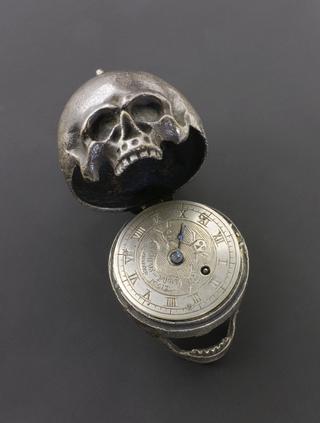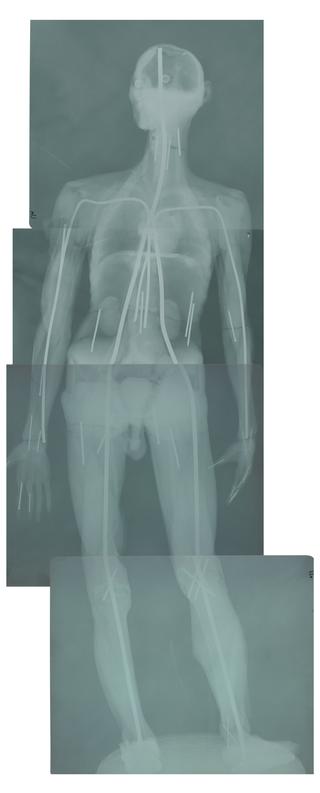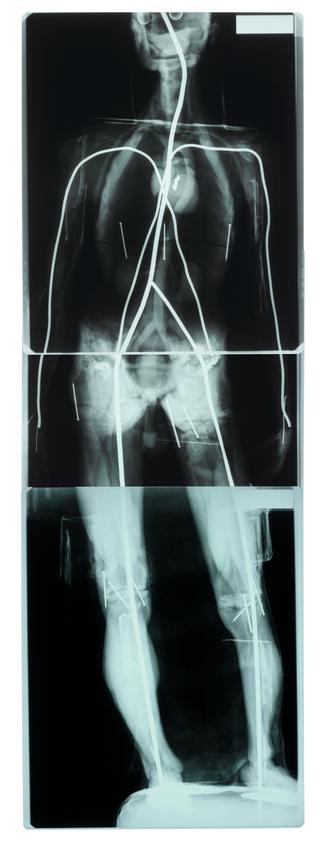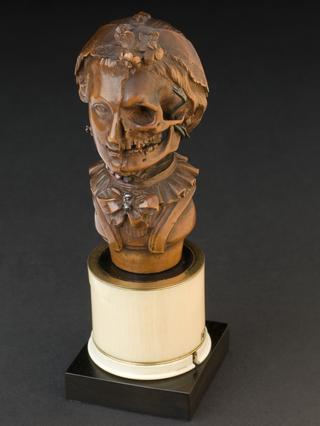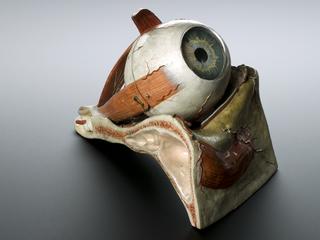






Ivory anatomical figure, a pregnant female, with some removable internal organs, lying on a couch, possibly German, 17th or 18th century
Female ivory anatomical models of this type were popular in the 1600s and 1700s, and were almost always shown as pregnant. In this example the foetus is shown in the uterus in position ready to be born. Carved from ivory, the heart can also be seen – the other internal organs are missing.
Such ivory anatomical figures normally came in male and female pairs. The organs are not very detailed so it is unlikely that the model was used for medical teaching. The figure was possibly used to teach young couples about anatomy and pregnancy or it may have been a collector’s item.
Details
- Category:
- Anatomy & Pathology
- Collection:
- Sir Henry Wellcome's Museum Collection
- Object Number:
- A642632
- Materials:
- figure, ivory, stand, wood, stand, velvet and stand, ivory
- type:
- anatomical figures
